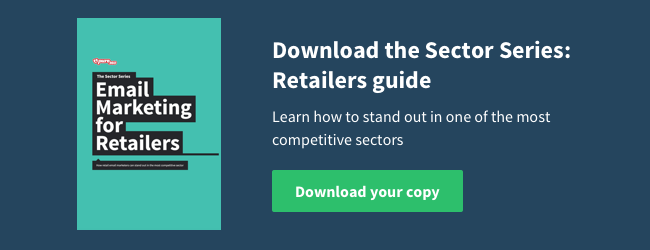Researchers have suggested that the average consumer is exposed to 20,000 brands a day (SJ Insights, 2014). That’s anything from TV ads, social media mentions, print campaigns and billboards – there are logos, adverts and slogans as far as the eye can see.
This morning my Acctim alarm clock woke me, I showered with Radox shower gel and brushed my teeth with Colgate on my Oral B toothbrush. I ate Nestle cereal with Yeo Valley milk, got dressed and pulled on my Adidas trainers before unlocking my front door with my Yale key. And that’s even before switching on my smartphone – browsing social media or listening to the radio as I went about my day.
And unsurprisingly, as consumers we’ve become blind to it all – there’s no way we can notice and process every single brand we encounter in our daily lives. The millions invested by companies in broadcast advertising is lost in a sea of constant promotion and over-exposure.
Human nature
The truth is that people don’t notice the logos and advertising promises you make until something goes wrong – it’s just human nature. We are hardwired to look for potential risks – our survival depends on being aware of danger and avoiding it, which means we pay far more attention to negative experiences than positive ones (Psychology Today, 2014). This means that consumers reading customer reviews are far more likely to look at negative write-ups than neutral or positive ones (Journal of Computer-mediated Communication, 2015). And this plays out in marketing, meaning a few bad experiences associated with your brand may have a far deeper impact than all the positive ones.
Out of the hundred logos in my house – on clothes, appliances and goods, the one sticking in my mind at the moment is the one on my tumbler dryer. Why? Because it went wrong – but it’s not the fact it’s faulty that makes the biggest impact – it’s the customer service I received as a result.
Fear not, they’re coming to fix it – I made sure of that, but they didn’t make it easy. They made me wait around, tried to sell me insurance policies and then asked me to search around for a pen to note down the date on which I need to wait around, all day, for someone to fix it. They couldn’t email me the details because the customer service representative didn’t have email. As a consumer I can accept there are faults in the machinery but I find it harder to accept faults in the human responses.
Turn failure into success
So what does this tell us as marketers? Well to me it suggests your biggest brand opportunity is the customer service you give when your brand fails to deliver. It’s at those times when a customer really notices your logo and engages – they need you to react and help them. And if you don’t come to their rescue it can have a bigger impact than you think. 55% of consumers switch to another brand after a negative customer experience and 95% of people who have a bad time with your brand are more likely to share their experience with others (ZenDesk). In America bad customer service is estimated to cost $41 billion dollars in lost sales (New Voice, 2013).
But a bad customer experience doesn’t always have to result in a bad brand experience – you can turn around most situations with a good response. The Retail Consumer Report suggests that out of customers who received a reply in response to their negative review, 33% turned around and posted a positive review and 34% deleted their original negative review. Furthermore, 85% of consumers said they would be willing to pay anywhere between 5-25% over the standard price to ensure a superior customer experience (The Retail Customer Report, 2011).
And it’s this 5-25% of people who are willing to pay more for a positive experience that you need to focus on. Apparently 79% of those from high income households state they’ll avoid a brand for two years or more after a negative experience (ZenDesk). This all means that the customers that are most perturbed by bad experiences are likely to be the ones who would have spent more with you in the future.
Invest in your customer service
By scrimping on customer service you lose customers, people who would have happily carried on using and buying your brand even if they didn’t consciously notice the name on the packaging. By making customer service your focus you’ll make a lasting impression and a greater impact than the TV ads, logos and glossy magazine articles marketers try and populate every household with. Just take a look at the brands who regularly top the customer service charts such as First Direct, John Lewis, Virgin Atlantic and Amazon – these are all companies with a strong brand recognition and a loyal following.
So the moral of the story is that in today’s hyper-connected and brand-saturated world customer service can be one of the few things to get you noticed. Delivering a good experience, responding to bad comments and making sure your customer stays happy will make a bigger impact than emblazoning every household in the UK with your logo.

